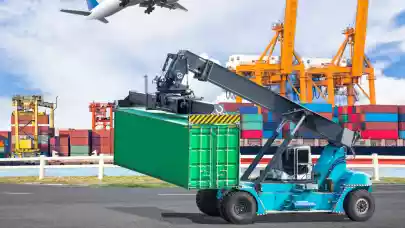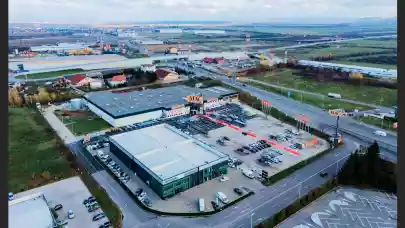
Warehouses have been facing pressure for speed, accuracy, safety and flexibility. To keep up with the growing demands of customers and the labour market, companies are increasingly investing in technologies, taking their operations to a new level. Based on experience with clients, Aspen agency has selected seven technologies that fundamentally affect warehouse operations.
Digital boards are important for visualising operational data. “Large-screen displays and interactive panels allow the display of current KPIs, operational statuses or safety alerts directly at the workplace. This gives employees a real-time overview of the current situation – for example, the fulfilment of daily goals, the status of orders or shift changes. Thanks to this visualisation, the need for verbal communication is reduced and workers’ independence is increased. Systems are often connected to WMS or ERP and are updated without human intervention, which minimises the risk of misinformation,” says Michal Černý from Audiopro.
Real-Time Location Systems (RTLS) use RFID, UWB or Bluetooth technology to precisely track the movement of people, machines and materials in real time. In a warehouse, this means, for example, the ability to automatically monitor the flow of goods from receipt to dispatch, or the immediate location of a free worker for an urgent task. In the event of accidents or entry into prohibited zones, an alarm can be automatically triggered or an alert can be sent to the person in charge.
Internal chat applications (e.g. Slack, MS Teams) have also proven themselves in some logistics operations, allowing teams to share operational information in an organised manner. Specific channels for different parts of the warehouse, such as receipt, dispatch or maintenance, ensure that important messages only reach those who are concerned.
Instead of paper forms, digital checklists are increasingly being used in mobile applications or tablets. This allows workers to easily and quickly confirm task completion, record checkpoints, or report defects in real time. “Automatic archiving and the ability to review records simplify audit processes and ensure transparency of operations across shifts,” adds Kristýna Rusňáková from the Trenýrkárna.cz e-shop.
Zello is a new professional Push-to-Talk (PTT) solution that enables instant voice communication between warehouse and logistics centre employees. It works similarly to a walkie-talkie; the user presses a button and speaks directly to colleagues or the entire team. This significantly reduces the time needed for coordination, solving operational problems, or calling for help.
Thanks to a combination of data from sensors, WMS, camera systems and IoT elements, modern safety systems in warehouses and logistics centres can identify potentially risky situations before they occur. A typical example is the prediction of a collision trajectory between a forklift and a worker or the automatic detection of unusual movement in restricted areas. “Based on this data, the systems activate warning signals in real time, redirect traffic, or immediately notify responsible persons. These technologies also have a significant benefit in the case of autonomous machines that move in the same space as people, for example, during automated cleaning or the transport of goods,” explains Lukáš Rom from Kärcher.
Logistics areas often have large roof areas that directly encourage the installation of photovoltaic panels. Thanks to them, the warehouse can generate its electricity, thereby reducing dependence on the distribution network and responding to volatile energy prices. In order to use solar energy as efficiently as possible, a smart battery storage system is the solution. “This stores the surplus produced during the day and supplies it back to the operation during peak times – for example, to recharge equipment or as a backup source. State-of-the-art battery storage systems help stabilise energy flows in the warehouse, increase self-sufficiency and enable smooth operation even during outages or fluctuations in electricity supplies,” concludes Pavel Bursa from Resacs.




